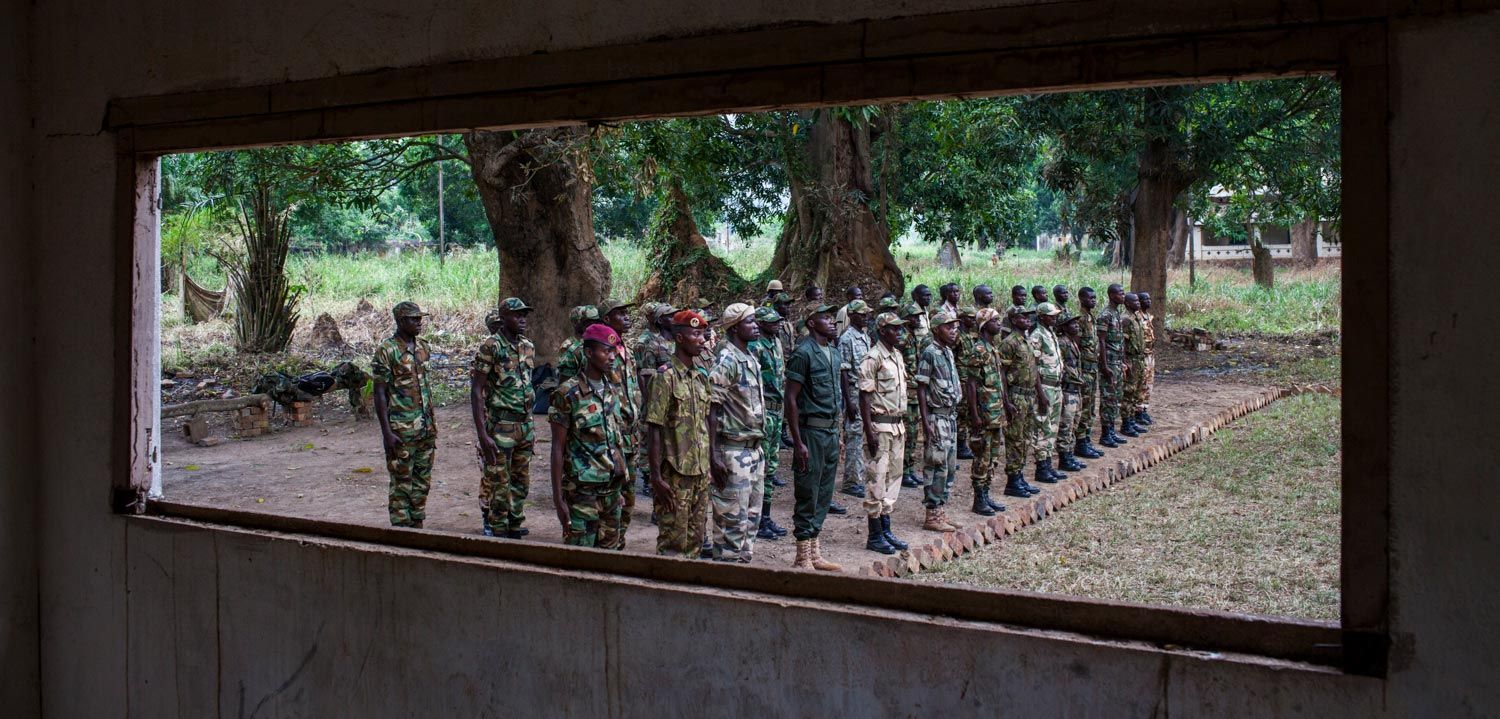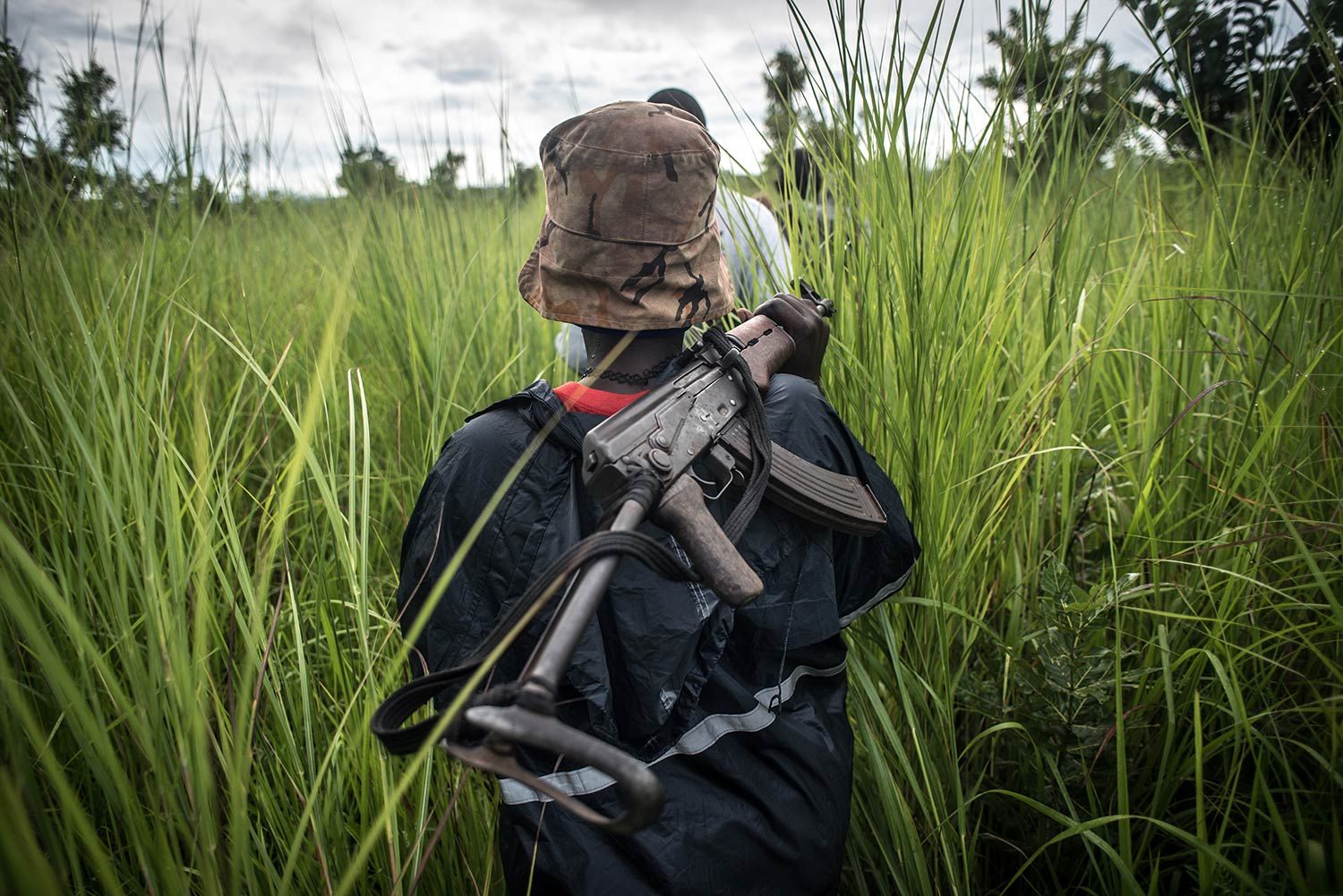This website does not support Internet Explorer, your current browser.
Please view the site with a modern browser such as Google Chrome or Mozilla Firefox.
Arms embargoes
Case Illustrations
Arms embargoes were used to help prevent or respond to mass atrocities in both Central African Republic (CAR) and South Sudan. Read the brief illustrations below to learn how this tool was used in these cases:
Central African Republic (2012–present)

Rwandan African Union soldiers training, Bangui, CAR. 2014. —Michael Christopher Brown for US Holocaust Memorial Museum
Violence in CAR erupted in December 2012 and escalated in March 2013 when a loose coalition of Muslim-majority militias, known as the Séléka, violently ousted President François Bozizé. Fighting quickly devolved along ethno-sectarian lines as the Muslim-majority Séléka faced armed opposition from Christian-majority Anti-Balaka forces (CFR 2022). Reprisal attacks targeted civilians, with an estimated 3,000-6,000 civilians killed between January 2013 and December 2014 (UNSC 2014). In response to these atrocities, the UN Security Council (UNSC) unanimously passed Resolution 2127 on December 5, 2013, leading to the implementation of a complete arms embargo on CAR, as well as mandating a Commission of Inquiry and an African Union Mission (GlobalR2P 2013). The United States also implemented its own arms embargo on armed militia groups and a sanctions regime against militant actors in CAR through Executive Order 13667 in 2014 (Federal Register 2014). Despite porous borders and an active black market for weapons (Harding 2015), the arms embargo remains in place and has been extended by the UNSC until July 31, 2022.
South Sudan (2013–present)

A SPLA-In Opposition soldier walks with her weapon through the elephant grass in rebel-held Magwi county of South Sudan’s Eastern Equatoria state on August 28, 2017. —Jason Patinkin for US Holocaust Memorial Museum
It is estimated that nearly 200,000 people were killed in the first five years of South Sudan’s civil war, which began in December 2013 (London School of Tropical Medicine 2018). An arms embargo was considered in the early months of the civil war, but the Obama administration withheld support for an embargo until 2016, due to concerns that it might inadvertently alter the dynamics of the conflict in favor of rebel forces, given a lack of enforcement capacity and large amounts of weapons already available (Temin 2018). The United States backed an embargo in 2016 but Russia and China blocked its adoption at the UNSC. In February 2018, the Trump administration implemented a unilateral arms embargo and the UNSC imposed a multilateral arms embargo in July 2018. Amnesty International (2020) has recorded multiple violations of the embargo, though the identity of the suppliers is unknown. In May 2021, the UNSC renewed the arms embargo for one year, while expressing readiness to review the embargo depending on South Sudan’s progress on five peace-related benchmarks (UN 2021).